Although it was neglected throughout much of its history, like most of the city’s eastern side, Columbia Square has now enjoyed a thorough restoration to become one of Savannah‘s loveliest spots.
Table of Contents
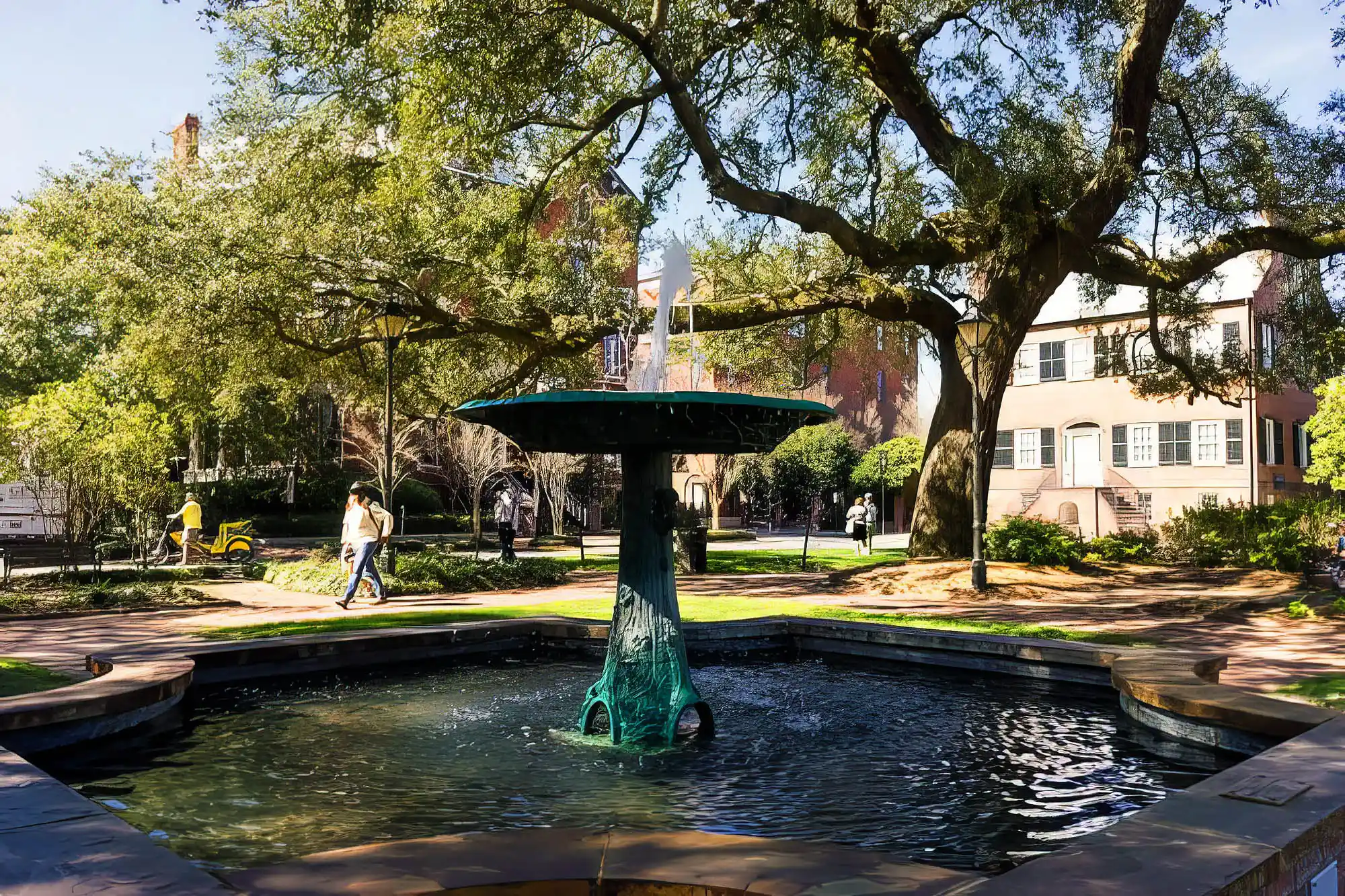
The restorative efforts kicked off in the 1950s when a group of society women, concerned about the demolitions which threatened to destroy Savannah’s historic soul, drew the line at the proposed destruction of the 1820 Isaiah Davenport House. They joined forces as the Historic Savannah Foundation, dedicated to protecting the city’s architectural heritage. Over the years, the foundation has purchased and saved over 300 buildings in Savannah’s historic center. Without their labor, the city would be a much more common place.
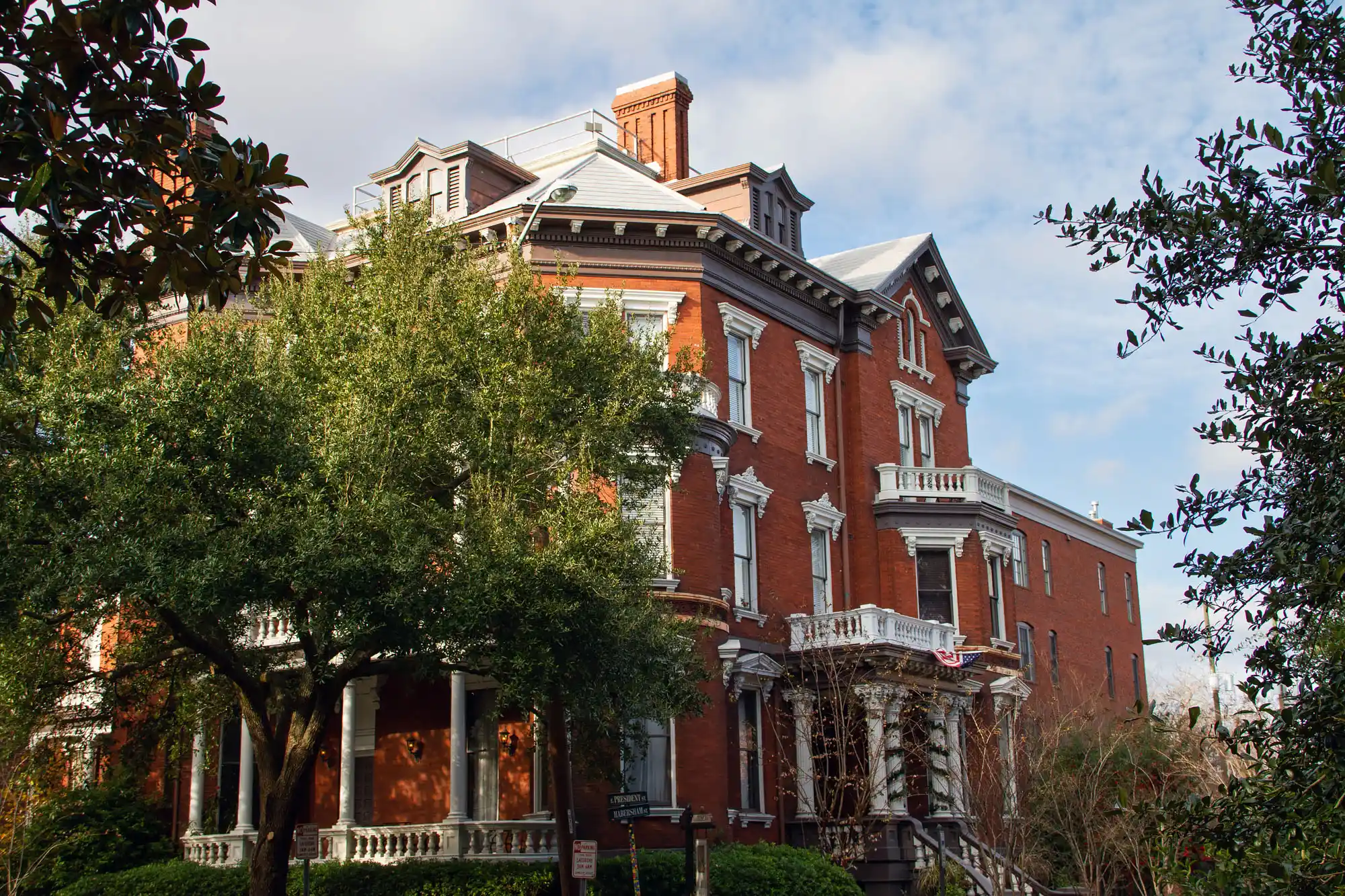
There are a number of other impressive buildings on Columbia Square, including the house at 130 Habersham, which is usually covered in ivory. But the best might the Kehoe Inn on the western side of the square. Built in 1892, in the Queen Anne Revival style, this mansion operates today as a bed and breakfast.
Columbia Square itself is a work of art. Four massive oak trees at each corner provide shade over the entire square, at the center of which sits the Wormsloe Fountain. Green and gray, the rustic fountain was designed in the shapes of leaves and winding ivy. Though it was donated by the plantation’s family in the 1970s, it looks as though it’s been in Columbia Square forever, like it sprouted from the ground.
Columbia Square Info
This site contains affiliate links. We may receive a commission if you make a purchase. More Information!
Columbia Square Photos
Most images can be licensed for commercial and editorial use, please contact us to find out more.
Columbia Square Map
Columbia Square FAQs
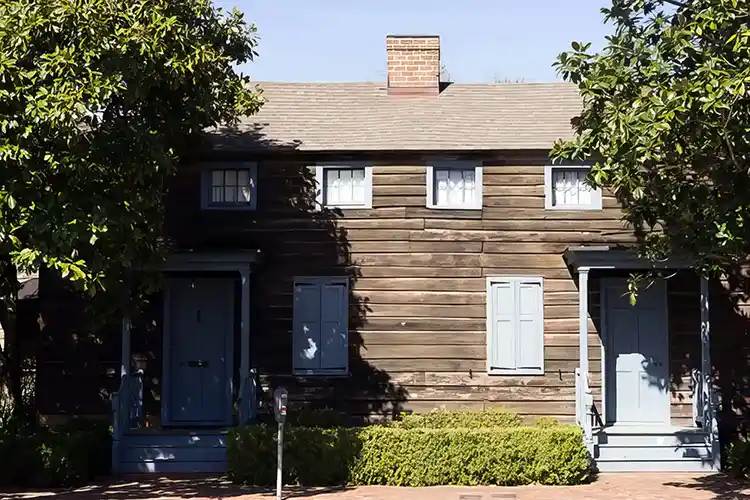
Is Columbia Square known to be haunted?
Indeed, numerous structures in the vicinity of Columbia Square have a reputation for being haunted. The Kehoe House is frequently cited as one of the most haunted places in Savannah.
Are there restrooms available at Columbia Square?
Public restrooms are not available directly in the square. However, facilities are accessible at the Davenport House Museum during its operating hours, typically from 10 a.m. to 5 p.m., Monday through Saturday.
What are the notable features of Columbia Square?
Located in the middle of Columbia Square, the Wormsloe Fountain was established in 1970 to honor Augusta and Wymberly DeRenne, who are descendants of Noble Jones. Originally, this lovely fountain was placed at the Wormsloe Plantation.
Related Articles
Squares Coffee Book
Savannah Square by Square is an eye-catching coffee table book filled with more than 300 colorful images of Savannah’s lovely historic downtown squares. Authored by Michael Jordan, a respected local filmmaker and historian, the book dives into the captivating history of all 22 current squares, as well as the two that have been lost and the lesser-known squares of Savannah.
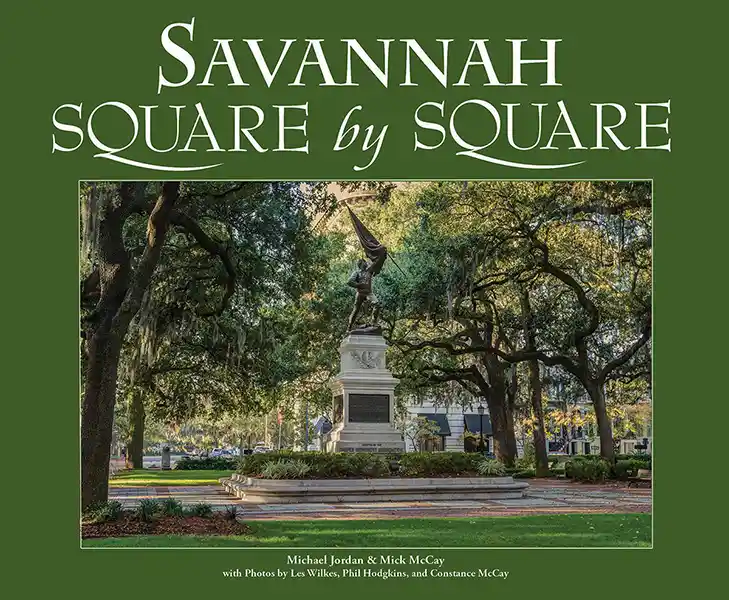
This site contains affiliate links. We may receive a commission if you make a purchase. More Information!

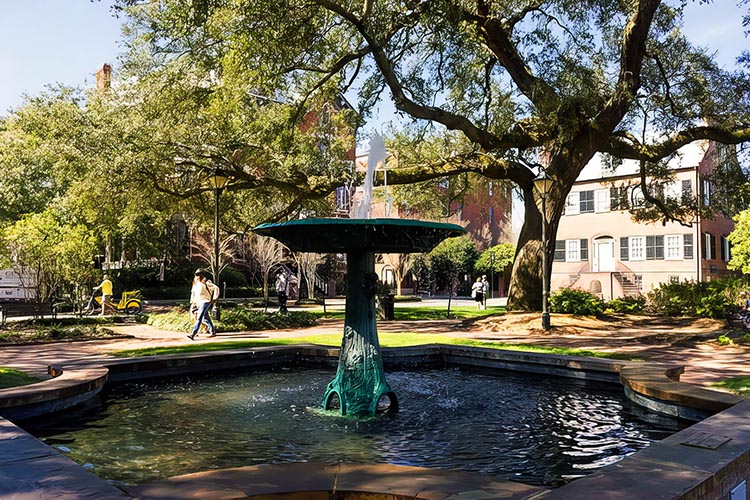
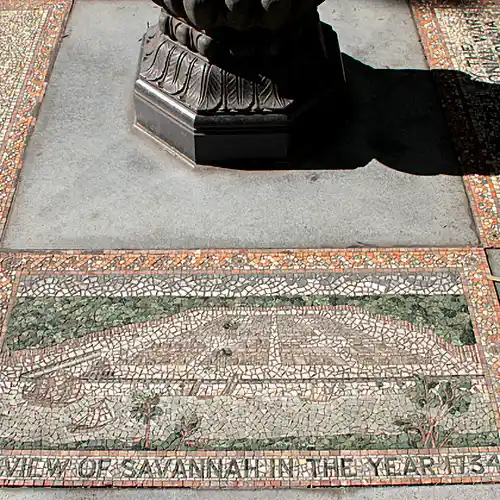
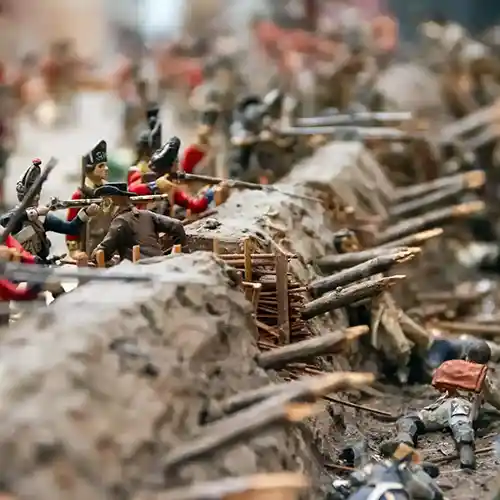

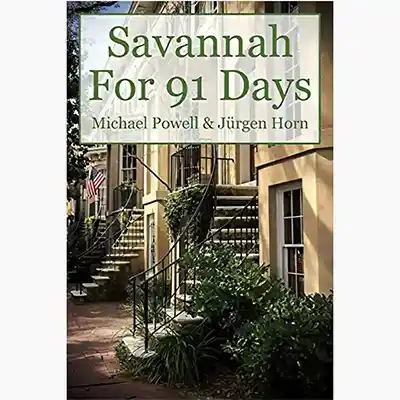






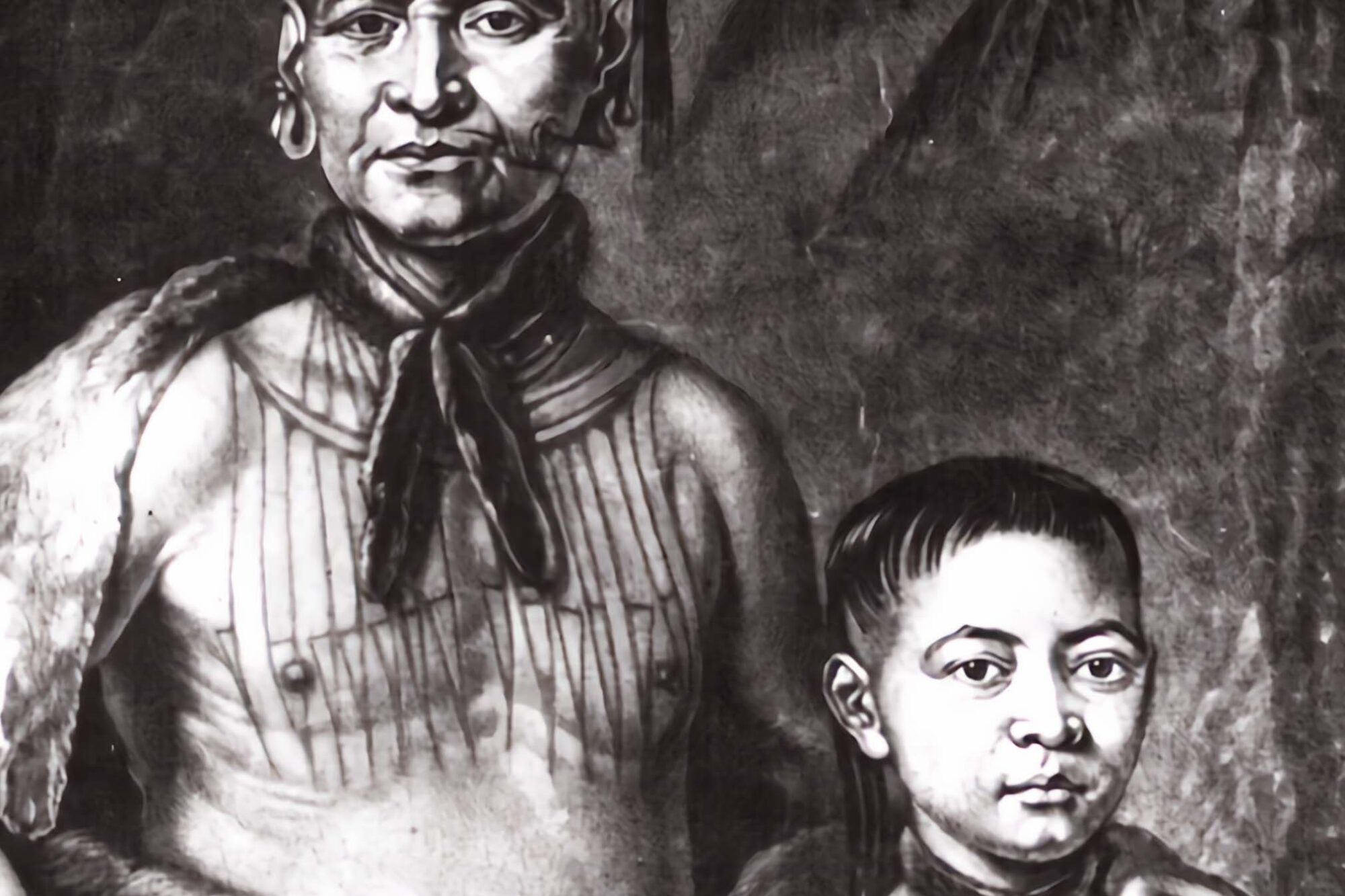
Leave a Reply